In second grade, students build on prior knowledge and expand their understanding of plant and animal interdependence. We explore the basic needs of plants and animals and ways that they depend on each other for survival. We investigate how animals help plants disperse seeds and pollinate flowers to continue the plant life cycle. Students explore natural phenomena and identify the caused and effects of these events. Students become familiar with science and engineering practices as they make science drawings and design models to simulate seed dispersal and pollination and plan and carry out investigations of plant and animal needs.
Plant and Animal Interdependence Activities
Here are my favorite lessons, activities, videos, and experiments for teaching about the basic needs of plants and animals and plant and animal interdependence in second grade. All of these activities address the Next Generation Science Standard LS2.A Interdependent Relationships in Ecosystems
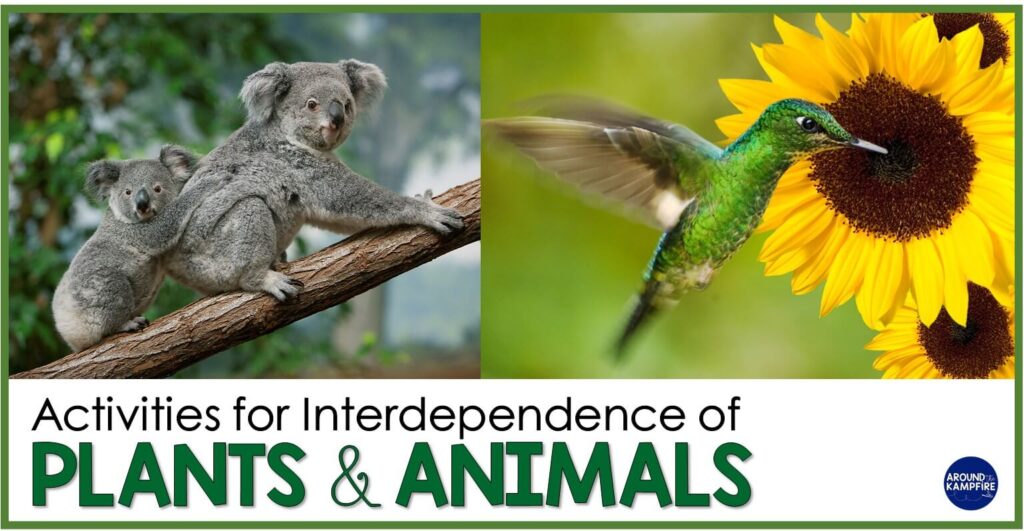
Basic Needs of Plants
Living things have basic needs in order to survive and grow. We begin our study discussing the needs of plants, the parts of a seed, and how each part helps the plant grow and thrive. Students diagram seeds and learn how each part feeds, protects, and helps the plant grow.
Students also explore a plant’s need for air, water, and sunlight. They conduct simple investigations to determine if plants need sunlight to grow by planting flowers in a cup and placing a paper bag over one of the plants. Each plant receives water, but only one receives sunlight. At this point students learn what variables are, and that scientists test only one variable at a time.
This lab is an ideal investigation to address 2-LS2-2, conduct an investigation to determine if plants need sunlight to grow and SEP.3, planning and investigation to produce data to serve as the basis for evidence to answer a question.
During the lab, students collect data to answer the question, “Can plants live without sunlight?”
Basic Needs of Animals
Our students learn that some animals get their needs met from their habitats, while others get their needs met by other animals. When teaching about plant and animal needs, we want students to understand that the way a dolphin gets air is different than the way birds or squirrels get air.
Explain to students that what an animals needs can guide its behavior. For example, when a bear is hungry, it hunts. When a hummingbird is hungry, it flies to a flower to eat.
Have students participate in shared research projects by creating informational animal care guides. This activity addresses writing standards as well as gives opportunities to use text features.
Animal research and book templates
Students research the basic needs of an animal to write their books. They include headings, diagrams, captions, and graphs. They also search for images to include and write captions.
Plant and Animal Needs Videos
These are a few of my favorite videos that support lessons on plant and animals needs.
Plants Depend on Animals Activities
I center all of my lessons around a high engagement, 7-lesson teaching Power Point loaded with visuals and close up looks at the symbiotic relationship between plants and animals.
Interdependence of plants and animals Power Point source
Some plants rely on animals for their survival. Some for pollination and some, like Venus Flytraps, even rely on animals for food.
Most plants need pollen from another plant to make seeds. This pollination simulation is a fun and easy way to incorporate science and engineering as students make science drawings to design and build a model pollinator.
These videos show different pollinators and ways that plants depend on them for survival.
One way that plants ensure their survival is by spreading their seeds to new places. Discuss with your students all the interesting ways that plant disperse their seeds. See how to make exploding seed pods, like milkweed, that build tension inside until the pod bursts scattering its seeds.
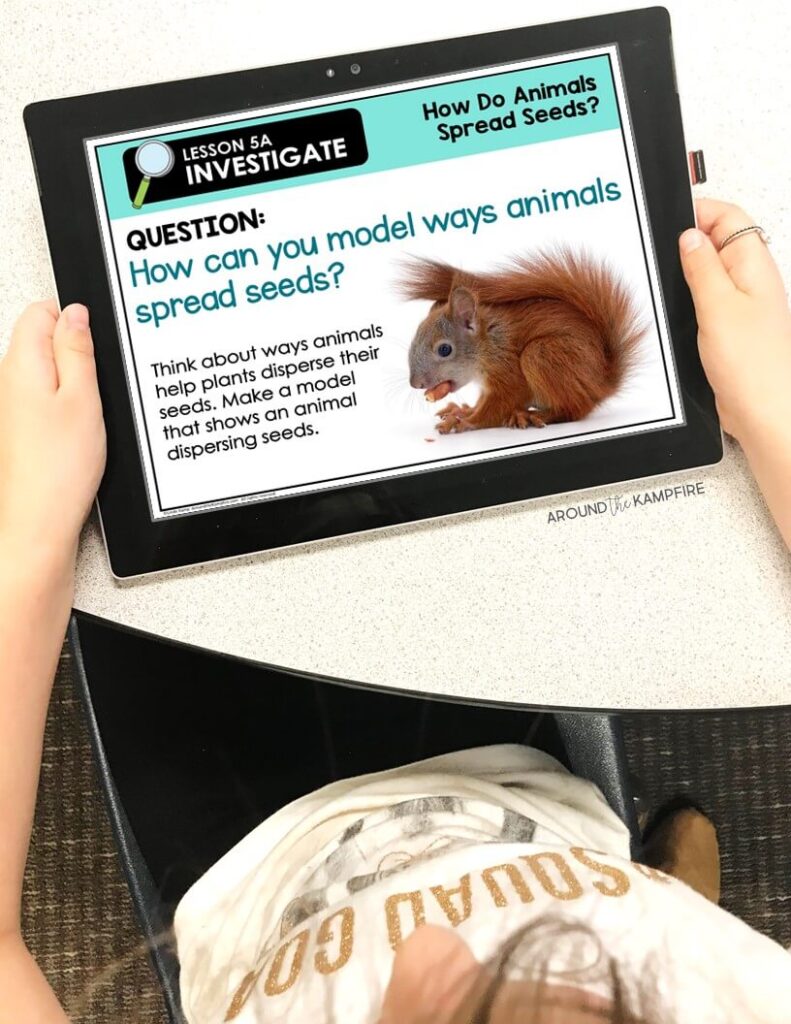
Plants & Animals Teaching Power Point
Wind and water carry seeds too, but many plants depend on animals to help them disperse seeds.

Seed dispersal lab sheet source
This seed dispersal STEM activity is definitely a favorite! Students build models to simulate animals spreading seeds by attachment. We used toilet paper rolls and quilt batting to make animals that students designed. Science drawings that your students make are a great way to informally assess their understanding.
Animals Depend on Plants Activities
Our second graders learn that animals depend on plants for food, shelter, and oxygen. Partners talk about ways animals use plants for shelter, and the kinds of plants animals eat.
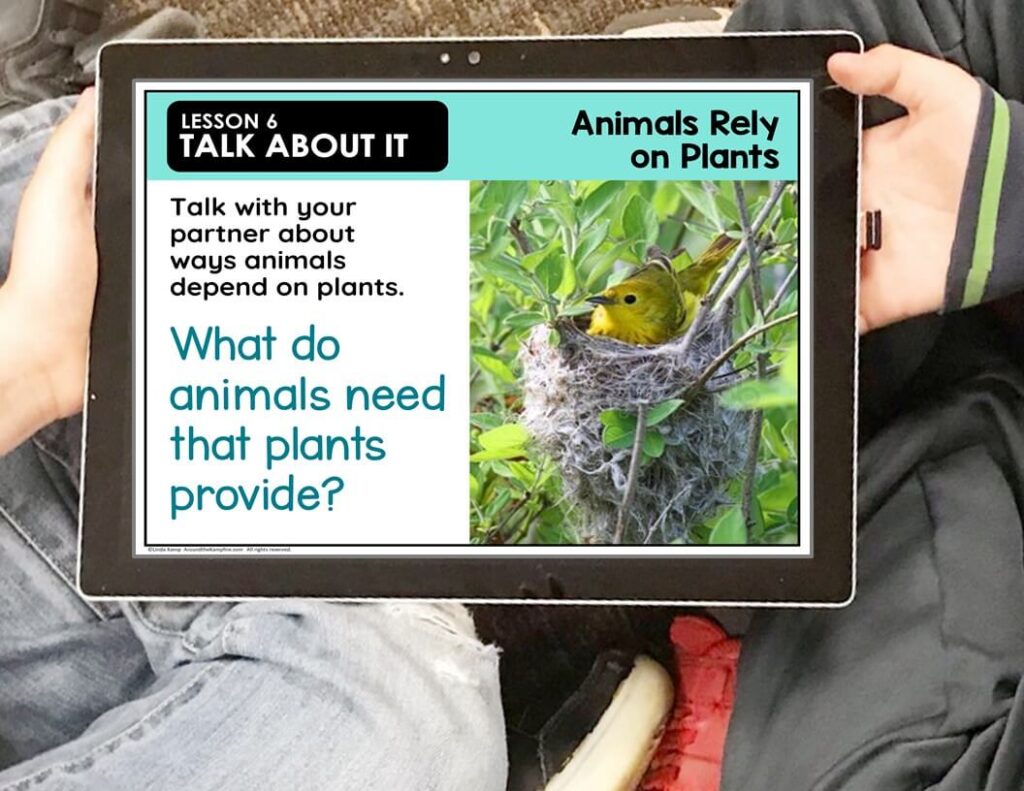
Plants and Animals Teaching Power Point
Related videos

Plants release oxygen that all living things need. Here is a fun breathing leaf lab to do so students can actually see a plant releasing oxygen.
Place a fresh leaf in a clear cup of water. Place a small rock on the leaf to keep it submerged. After about 20 minutes you can observe the leaf expelling oxygen by producing air bubbles in the water.
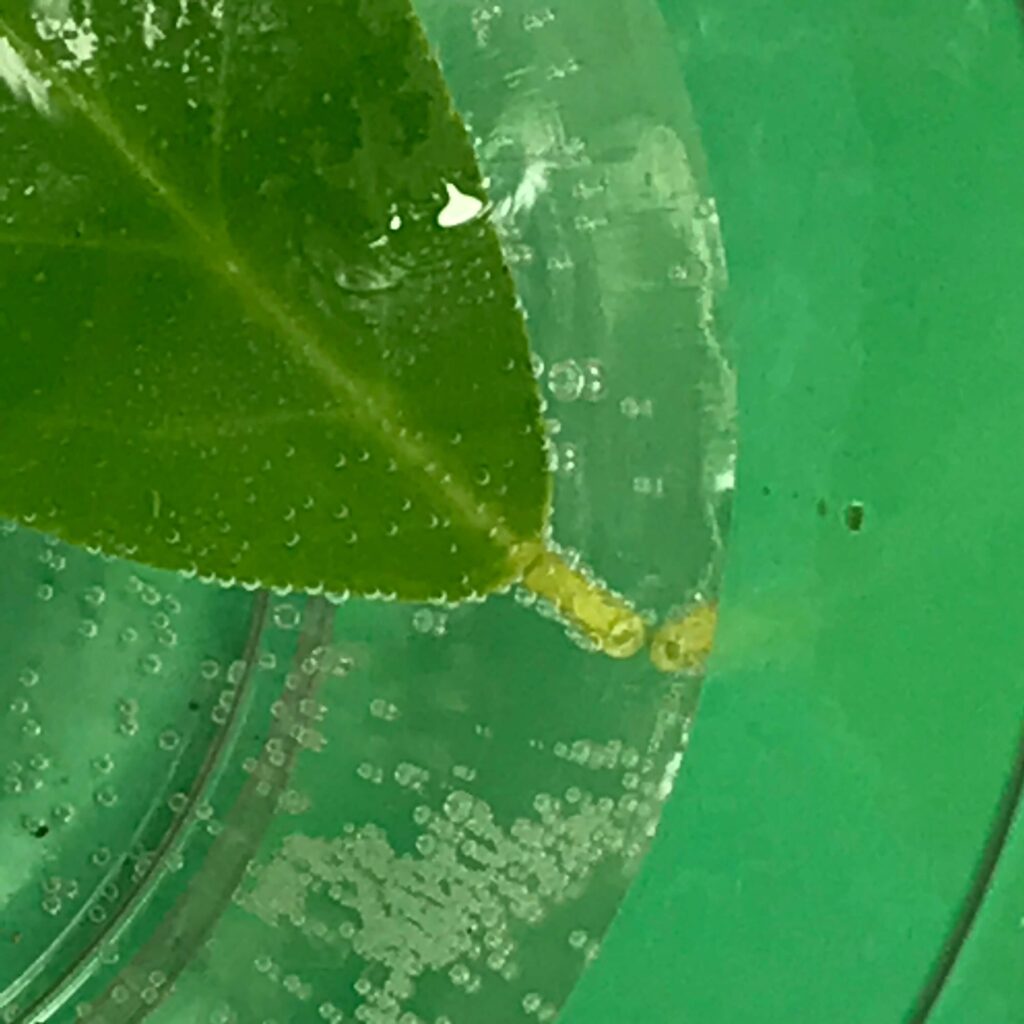
Using Science Content to Practice Literacy Skills
Identify Causes and Effects
Identifying the causes and effects of natural events helps students to better understand the basic needs of plants and animals and their symbiotic relationship. There are many cause and effect connections to be made as students learn ways plants and animals rely on one another.
Some examples include:
a beaver needs shelter > it uses tree branches to make a dam
an animal eats fruit with seeds > seeds are spread to new places in its waste
a bee flies from flower to flower > pollination occurs
an insect lands on the leaf of a Venus Flytrap > the leaves close trapping the insect for the plant to eat
Categorizing
Using pictures of plants and animals to teach students to collect, categorize, and organize data works well with younger students. Students can sort the pictures in a variety of categories that also assesses their learning. Depends on plants for food, depends on plants for shelter, makes its own food etc. are just some of the types of categories we use. This science center asks students to organize data in a table by categorizing plants and animals by their needs.
Solving Science Word Problems
So many of these activities lend themselves well to applying math skills. Adding, subtracting, measuring, and graphing are easily incorporated in lab activities and investigations. To reinforce science content and practice math skills, give students word problems centered about plant and animal needs.
word problems task cards resource
All of the activities, experiments, and Power Point lessons shown in this post are part of this complete Plant and
Animal unit for 2nd grade.

Click HERE for the complete printable unit and HERE for the digital version. Save 20% on the Print & Digital bundle.
I hope you’ll try some of these plant and animal activities with your second grade scientists. If you found this post helpful, pin it for later so you have it when you plan!

Happy teaching!

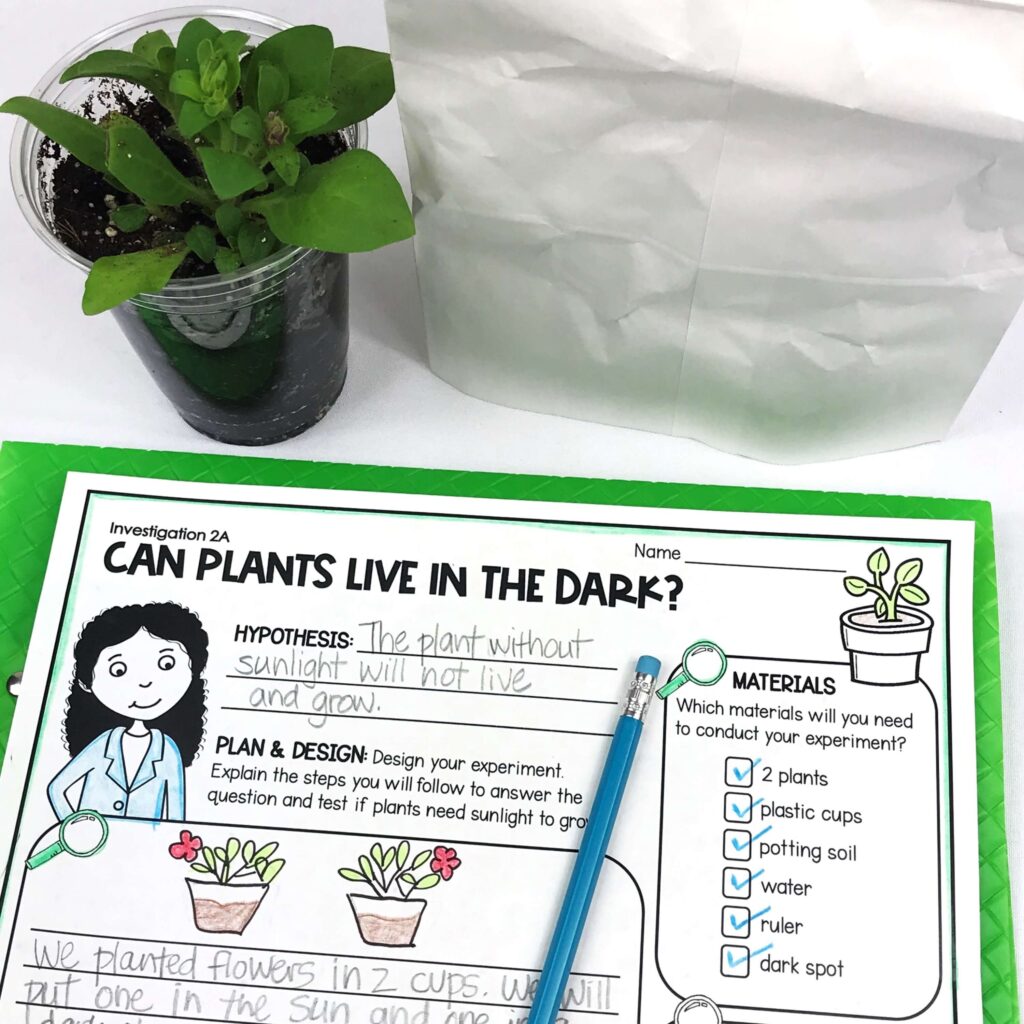





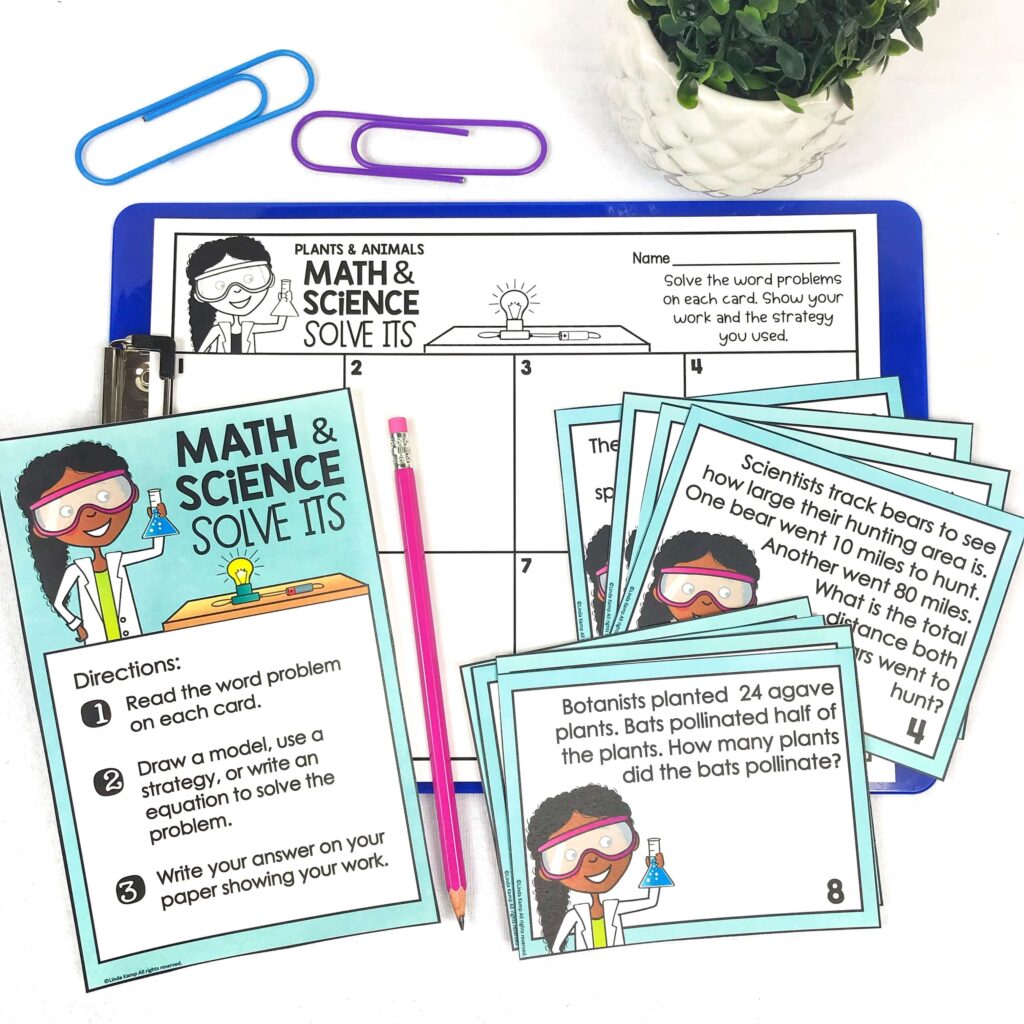

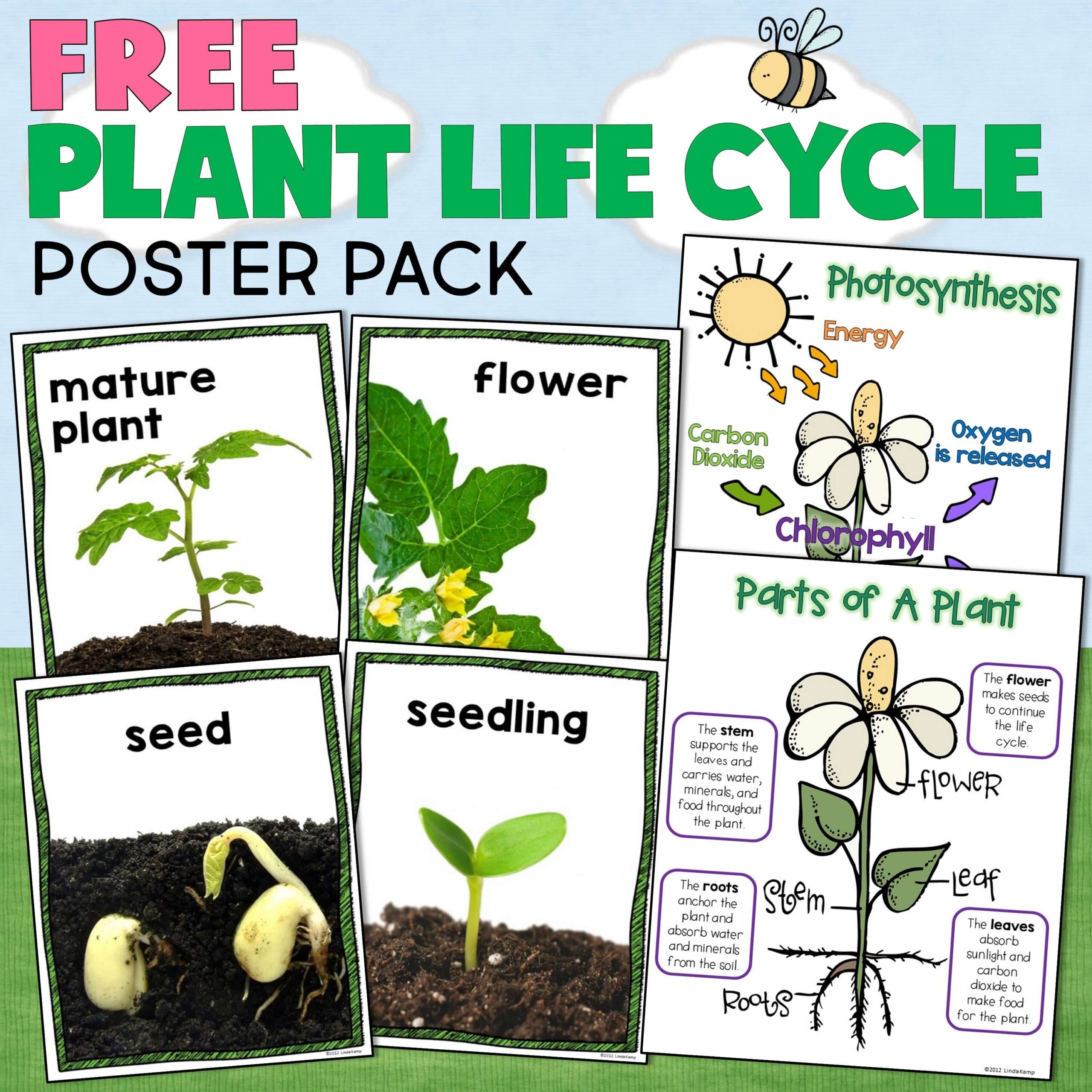
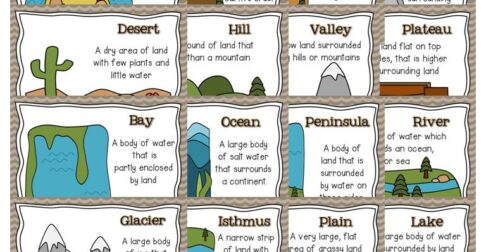



I love these resources!! They align perfectly with our Elevate Science curriculum and I really enjoy the layout of your bundle! The pictures are beautiful and the labs are so appropriate. They are manageable, fun and relatable! Thank you for making my job a lot easier and science more fun for our kiddos! This is so much better than the textbook! I probably should have purchased the whole year but I only found you through a co worker a few weeks ago so we only purchased the last two we needed.
If anyone is on the fence….. get them all!!! It’s worth it.
This is so helpful.
Beautiful and very interesting activities. I love it.
Thank you Evette, I hope they are helpful to you!